How to Block Websites on Chrome in 8 Effective Ways
January 12th · 13 min read

Guardio Research Specialist
Blocking websites on Chrome is a crucial step to protecting your online security and avoiding malicious content that can compromise your personal data. In addition to helping you stay focused, and protect your kids online, blocking websites secures you against potential threats and ensures a safe browsing environment.
This guide explores eight effective methods to block websites on Chrome, including using browser extensions, built-in settings, and apps from the Google Play Store or App Store for mobile devices. With step-by-step instructions tailored to various devices and scenarios, this article will equip you with the tools and knowledge to take control of your browsing experience while enhancing safety, and how Guardio can help with that.
Key Takeaways
- Security First: Prioritizing security is important to protect against potential threats and ensure a safe browsing environment.
- Multiple Methods: There are various methods to block websites on Chrome, including using extensions, built-in settings, and router-based controls.
- Comprehensive Protection: Combining different blocking techniques can provide a more secure browsing experience.
- Additional Layer of Protection: Guardio offers an additional layer of protection by automatically blocking harmful websites, enhancing your overall online security.
Boogie down the secure path
In This Article:
- 8 Ways to Block a Website on Chrome
- Why Block Websites on Chrome?
- Common Challenges in Blocking Websites
- Tips for Effective Website Blocking
- How to Unblock Websites on Chrome
- Pro Tip: Block Websites on Chrome with a Simple Shortcut
- Protecting Yourself and Blocking Malicious Websites on Chrome with Guardio
- Conclusion
8 Ways to Block a Website on Chrome
Here are eight simple methods to help you block unwanted websites on Chrome across different devices:
1. Using an Extension
Extensions are designed to simplify the process of blocking sites and offer various customization options.
-
Launch the Chrome browser and navigate to the Chrome Web Store.
-
In the search bar, type "website blocker" or "site blocker" and press Enter.

-
Browse through the available extensions. Popular choices include "Block Site," "StayFocusd," and "LeechBlock."
-
Click on the extension you prefer.
-
Click the "Add to Chrome" button.
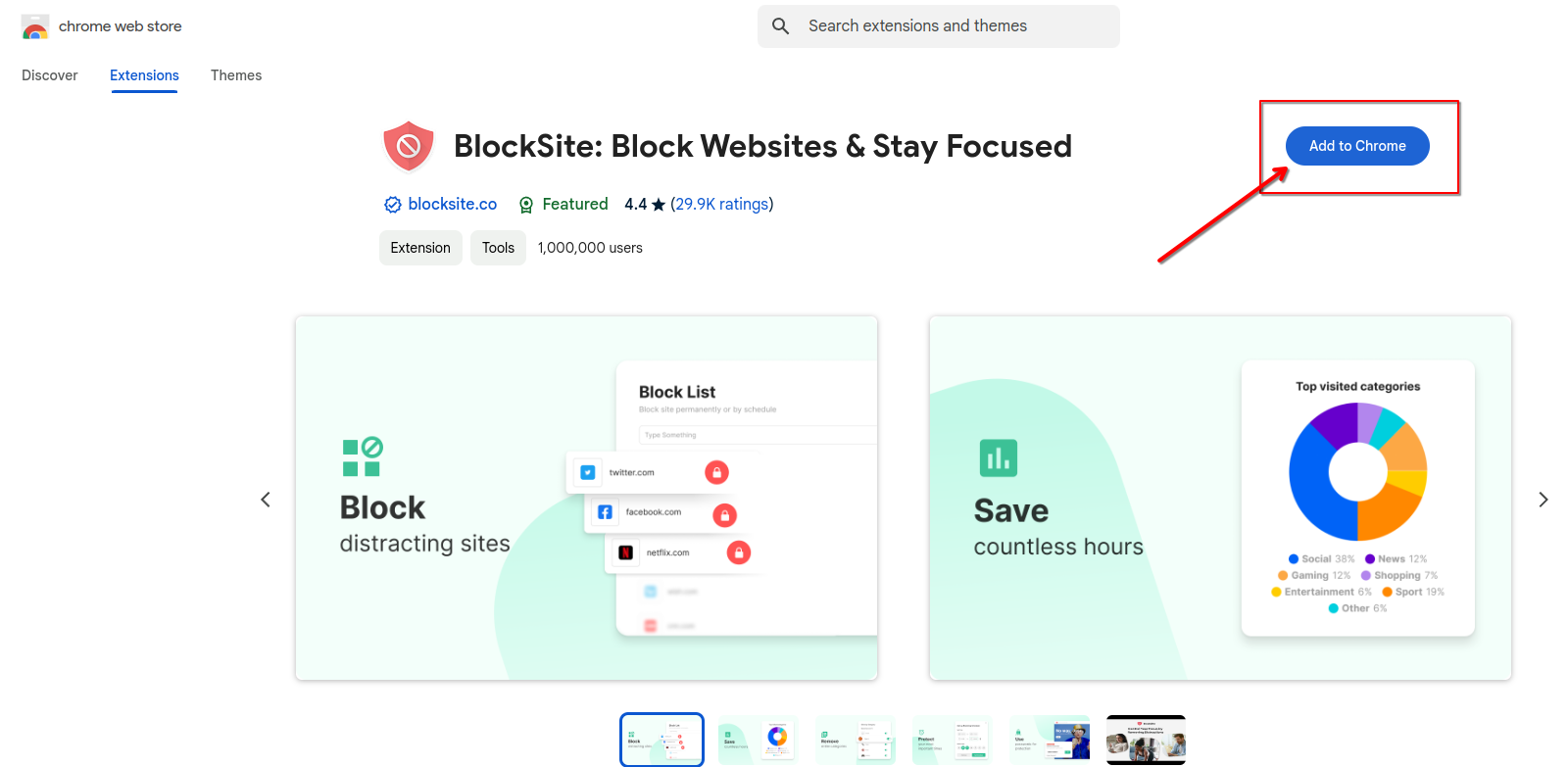
-
Confirm the installation by clicking "Add extension" in the pop-up dialog.
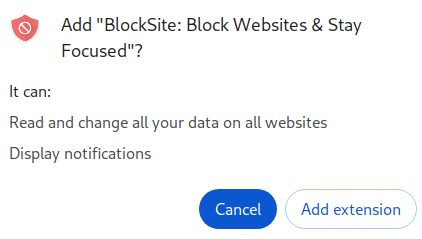
-
Once installed, click on the extension icon in the Chrome toolbar.

-
Look for the settings or options menu within the extension.
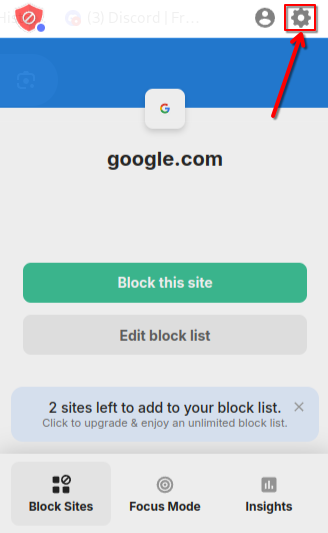
- Enter the URLs of the websites you want to block.
- Most extensions allow you to add multiple websites to the block list.
Blocking Websites in Incognito Mode
-
Open the extension settings.
-
Look for an option to enable blocking in Incognito mode.

-
Toggle this feature on to ensure that blocked websites remain inaccessible even in private browsing sessions.
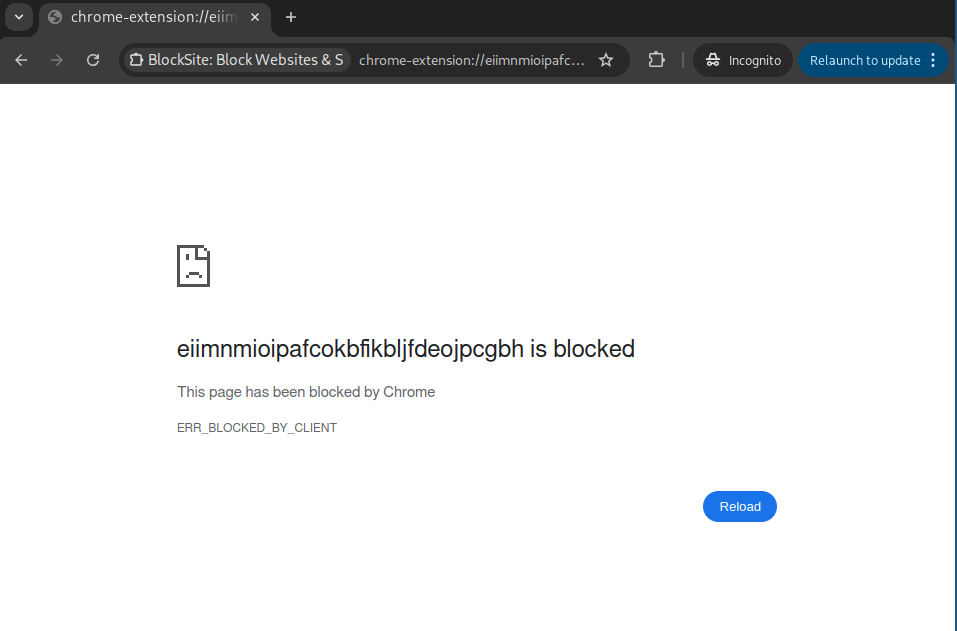
2. Without Using an Extension
If you prefer not to use third-party Chrome extensions, here are built-in methods to block websites using Operating system support.
Using Parental Controls on Windows
- Open Settings: Go to "Settings" via the Start menu.
- Navigate to Family & Other Users: Select "Accounts" > "Family & other users."
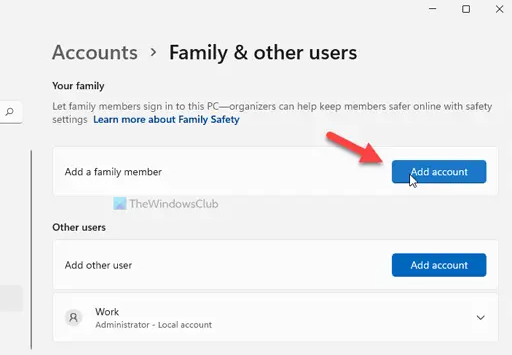
- Add a Family Member: Click "Add a family member" and follow the prompts for a child account.
- Block Websites: Under the child’s profile, go to "Content restrictions" > "Web browsing" to add websites.
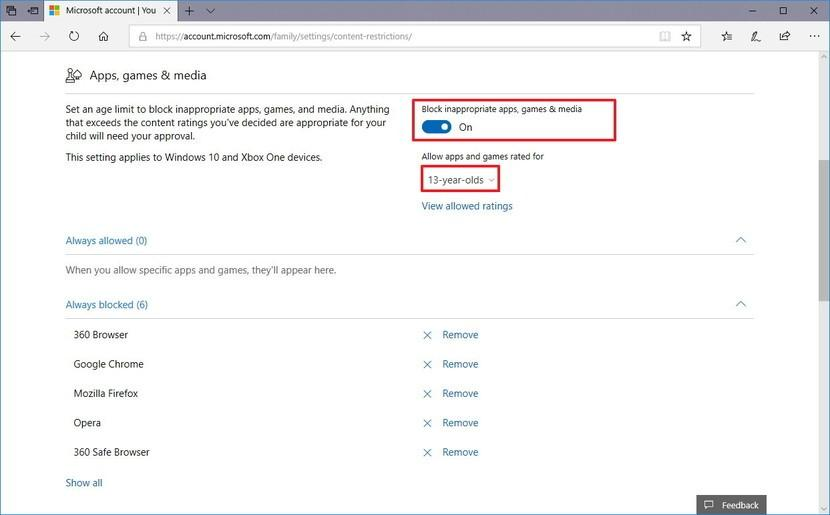
Using Screen Time on Mac
- Open System Settings: Select "Screen Time" from the Apple menu.
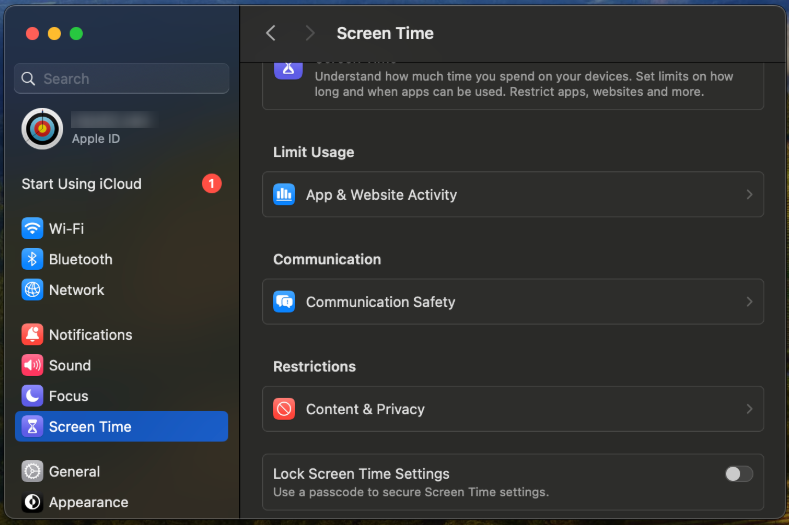
- Configure Content & Privacy:
- Select "Content & Privacy" > "Content" tab.
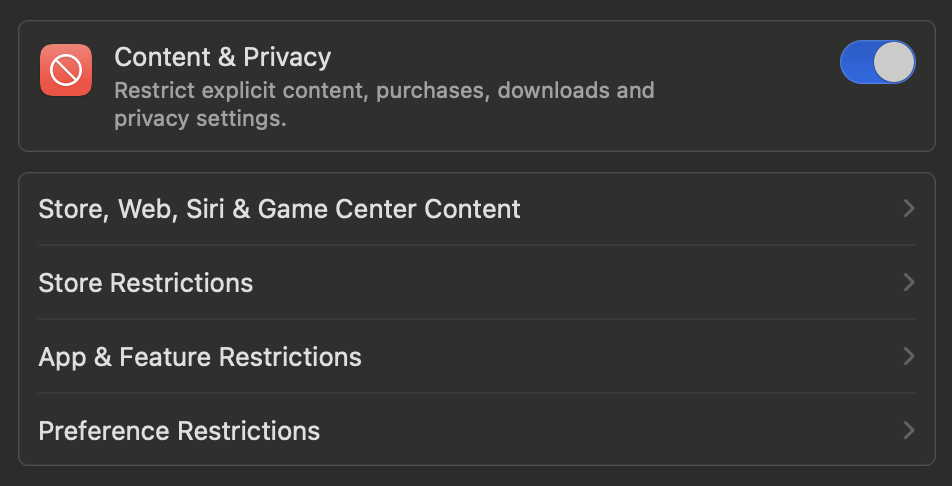
-
Under "Web Content," choose "Limit Adult Websites" and click "Customize" to block specific sites.


3. On Mobile Devices
Blocking websites using apps on mobile devices can be just as important as on desktops, especially for ensuring productivity and protecting children from inappropriate content.
Android Devices
Using Google Family Link:
- Install Family Link: Download the Google Family Link app from the Google Play Store on both the parent’s and child’s devices.
- Set Up Family Link: Follow the setup instructions to link the child’s device to the parent’s device.
- Manage Settings: Open the Family Link app on the parent’s device, select the child’s account, and go to the "Manage settings" section.
- Filter Websites: Under "Filters on Google Chrome," choose "Manage sites" and then "Blocked" to add inappropriate website URLs to the block list.
iOS
Using Screen Time:
- Open Settings: Go to the Settings app on the iOS device.
- Select Screen Time: Tap on "Turn On Screen Time."
- Content & Privacy Restrictions: Go to "Content & Privacy Restrictions" and enable it.
Using Third-Party Apps:
- Install a Blocking App: Download a website blocking app from the App Store or Google Play Store, such as "Freedom" or "Focus" or "Blocksite app", etc.
- Configure the App: Open the app and follow the instructions to block websites and customize the settings.
4. Using a Wi-Fi Router
Blocking websites using your Wi-Fi router can be helpful to control internet access for all devices connected to your network. This method is particularly useful for families or small businesses looking to enforce uniform restrictions.
Access Router Settings:
- Open a web browser and enter your router’s IP address (commonly 192.168.1.1 or 192.168.0.1) in the address bar.
- Log in with your router’s admin username and password.
Navigate to Website Blocking Settings:
-
Look for a section labeled "Parental Controls," "Website Filtering," or "Access Control" in the router’s settings menu.
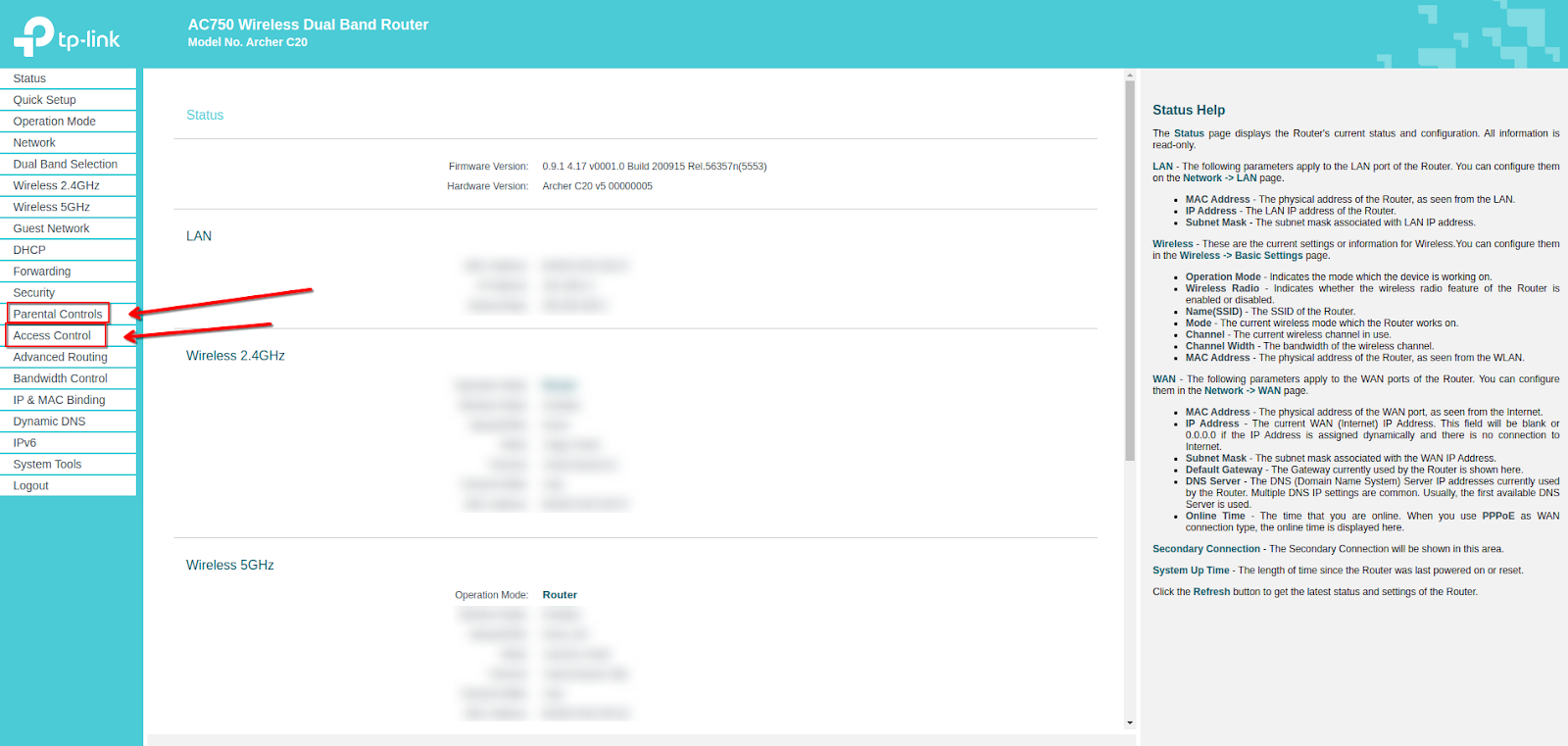
-
The exact location and terminology may vary depending on your router model, so consult your router’s manual if needed.
Add Websites to the Block List:
- Enter the specific website URLs of the websites you want to block.

- Some routers allow you to block websites by keyword, which can be useful for blocking categories of content.
Save and Apply Settings:
- Save your changes and apply the new settings.
- Restart your router if prompted to ensure the changes take effect.
5. Using the SafeSearch Feature
Google's SafeSearch feature is a built-in tool designed to filter out inappropriate content from search results.
Enable SafeSearch on Google:
- Go to the Google homepage.
- Click on "Settings" in the bottom-right corner.
- Select "Search settings."
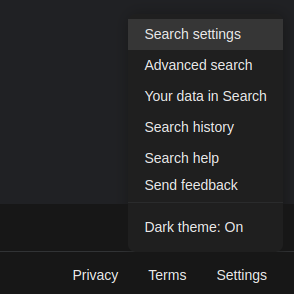
- Under "SafeSearch" select filter.

6. Using the Hosts File
To block websites on Chrome using the hosts file, follow these steps:
Open the Hosts File:
-
On Windows: Open Notepad with the administrator account and navigate to
C:\Windows\System32\drivers\etc\hosts
-
On Mac & Linux: Open Terminal and type
sudo nano /etc/hosts.
Edit the Hosts File:
Add a new line at the end of the file with the format:
127.0.0.1 www.websitename.com.
Replace www.websitename.com with the domain name of the website you want to block.
Save and Close:
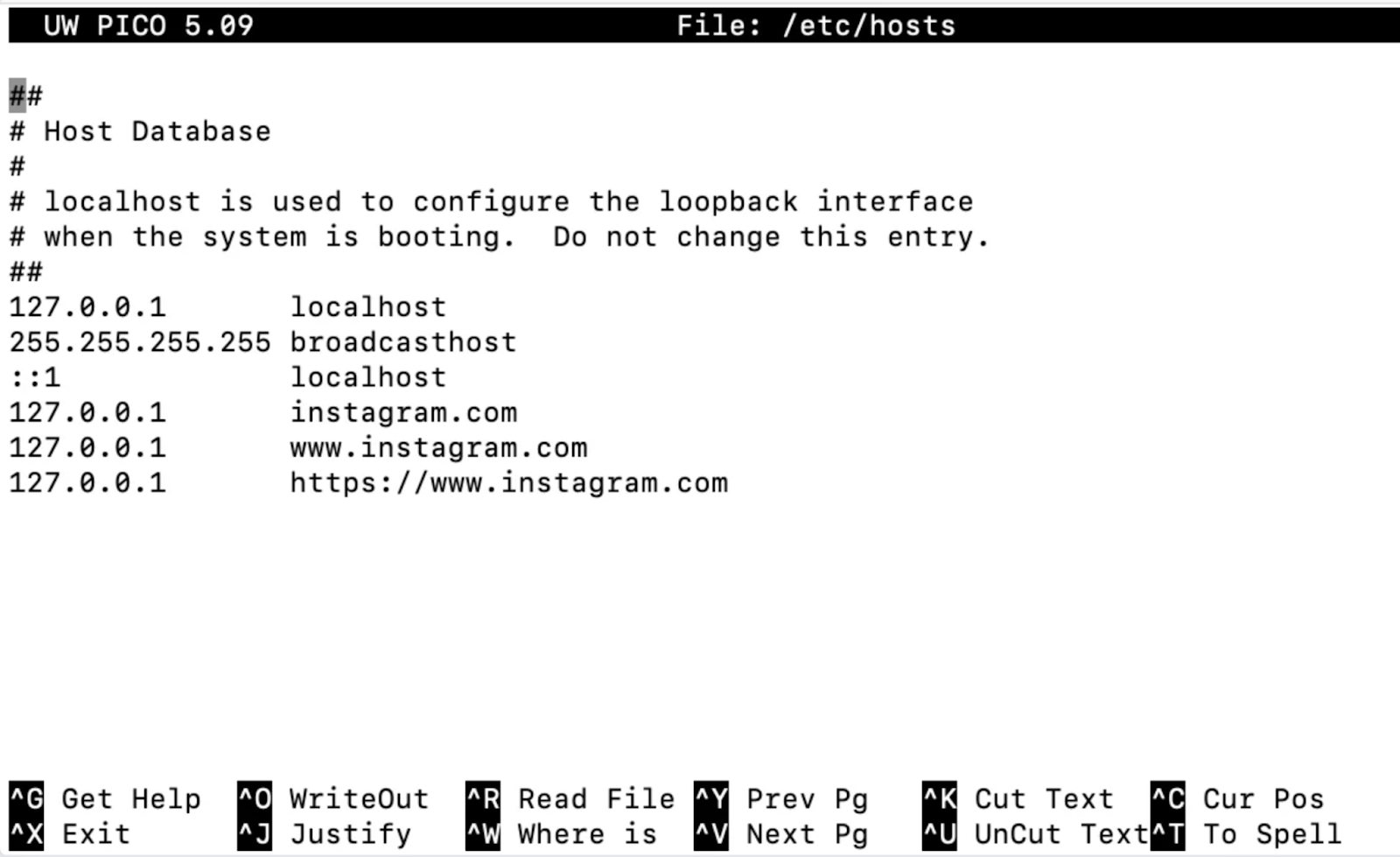
Flush DNS Cache:
-
On Windows: Open Command Prompt as an administrator and type
ipconfig /flushdns.
-
On Mac: In Terminal, type
sudo dscacheutil -flushcache; sudo killall -HUP mDNSResponder.
This redirects the blocked website to your local machine, making the domain names inaccessible.
7. Using the BlockList URL Feature
As a Google admin account administrator, you can set up Chrome policies for your organization.
Access the Admin Console:
- Navigate to your Google admin account admin.google.com.
- Navigate to Chrome Settings:
- In the Admin console, click on the Menu icon (three horizontal lines) in the top-left corner.
- Go to Devices > Chrome > Settings. If you are using Chrome Enterprise Core, navigate to Chrome browser > Settings.
Select Organizational Unit or Configuration Group:
- If you need to apply settings to specific users or devices, select the appropriate organizational unit or configuration group from the side menu.
Configure Policies:
- Go to Chrome://policy/

- Scroll through the list of settings or use the search box to find specific policies like URL Blocklist and URL Allowlist.
- Click on the setting you want to configure. For example, to block specific URLs, click on URLBlocklist, enable it, and enter the URLs you want to block.
- Similarly, configure URLAllowlist to allow specific URLs as exceptions.
8. Using Built-In Site Settings on Chrome Browser
Chrome has built-in settings that allow you to block sites without the need for additional software.
Open Settings:
- Open Chrome and Click on the three vertical dots in the top-right corner of the browser.
- Select "Settings" from the dropdown menu.
Navigate to Privacy and Security:
- Click on "Privacy and security" and select "Site settings."
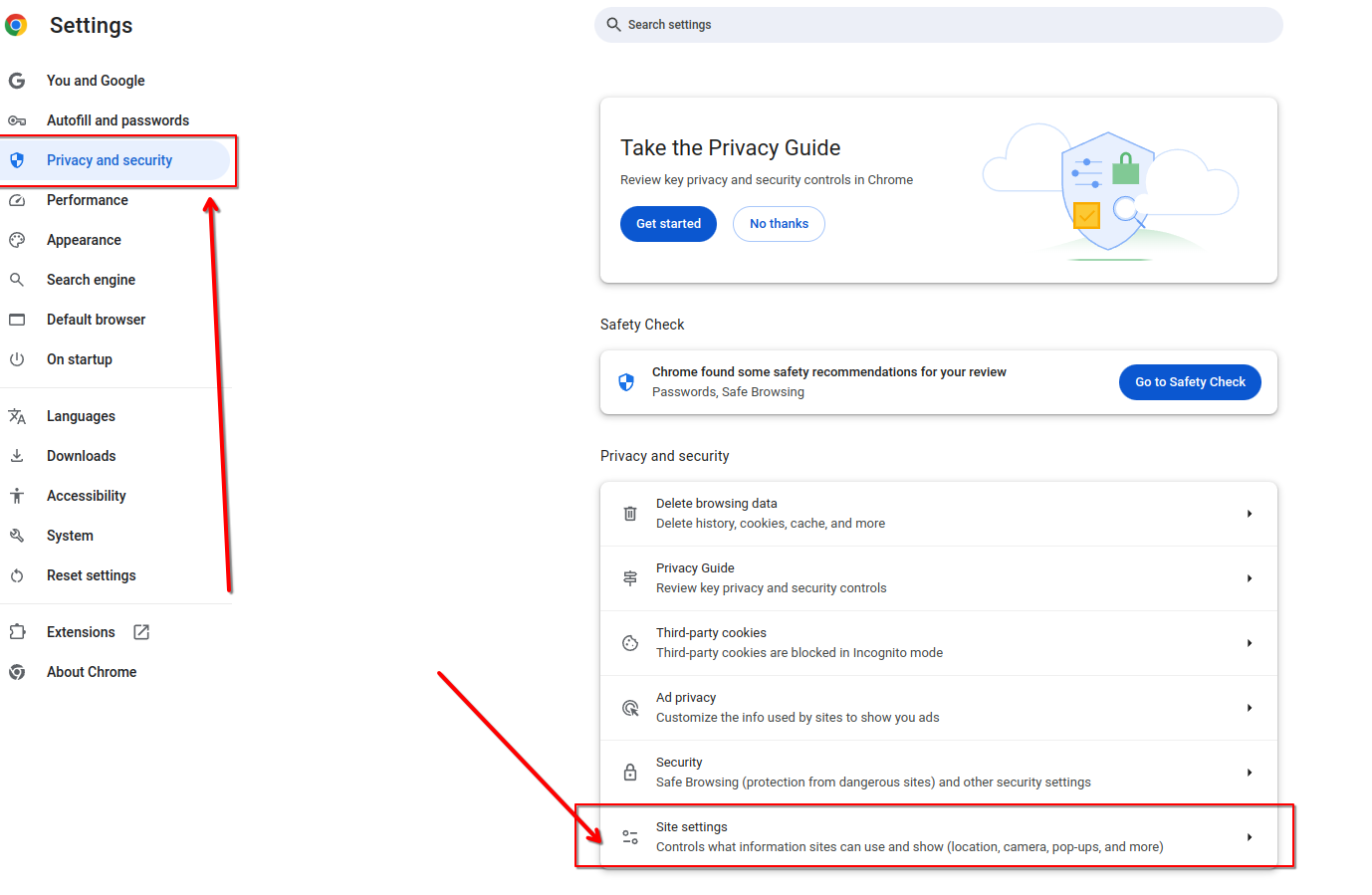
- Scroll down to "Additional content settings" and click on "Insecure Content".
Add Websites to Block List:
- Enter the URLs of the websites you want to block.
- Click "Add" to enter URLs and block access.

Why Block Websites on Chrome?
Blocking websites can help you keep your browsing experience safe, protect sensitive users and stay focused. Let’s explore this in more detail:
Preventing Access to Malicious Content
One of the main reasons for blocking websites is to prevent access to malicious downloads. Websites that host malware, phishing scams, or other harmful content can pose significant security risks. By blocking these sites, you can protect your device and personal information from potential threats.
Enhancing Focus and Productivity
Blocking websites can also help improve productivity and focus. Social media sites, entertainment platforms, and other distracting websites can be a major source of procrastination. By blocking these sites during work or study hours, you can create a more focused environment and improve your productivity.
Implementing Parental Controls for Kids
For parents, blocking websites is an essential part of implementing parental controls. By restricting access to inappropriate content, you can ensure that your children have an age-appropriate and safe browsing experience. This can include blocking adult content, violent websites, and other unsuitable material.
Common Challenges in Blocking Websites
Blocking websites isn’t always straightforward, and you might face issues like bypassing restrictions or technical limitations:
Challenges Solutions| Managing Exceptions for Trusted Websites | Create a whitelist of trusted websites. Review and update the list regularly to ensure accuracy. |
| Overcoming Extension Limitations | Use multiple extensions if needed. Regularly update extensions to benefit from the latest features and bug fixes. |
| Handling Device-Specific Restrictions | Use router-based blocking for network-wide control. Sync settings across devices using cloud-based parental control tools. |
| Bypassing Blocks | Implement advanced monitoring tools. Educate the users on the importance of complying with the restrictions. |
| Maintaining User Privacy | Use transparent communication about the blocking policies. Allow users to request access to blocked sites if necessary. |
Tips for Effective Website Blocking
Follow these tips to ensure your website-blocking methods are reliable, secure, and suited to your needs:
-
Regularly Update Block Lists: Periodically review the list to add new sites and remove any that are no longer relevant.
-
Test the Blocking Method After Setup: After setting up your blocking method, test it to ensure that the websites are effectively blocked. Look for any potential ways users might bypass the blocks and address them accordingly.
-
Use Multi-Layered Blocking for Added Security: Use a combination of browser settings, router-based blocking, and software solutions for comprehensive coverage. Leverage browser extensions that offer additional blocking features and enhancements.
How to Unblock Websites on Chrome
There are various ways to unblock websites on Chrome, depending on how they were initially blocked.
Method Removal Action| Extensions | Uninstall the extension responsible for blocking the website. |
| Hosts File | Delete the entry for the blocked website in the hosts file and flush the DNS cache. |
| Parental Control Settings | Remove the website from the block list in the parental control settings. |
| Router | Remove the website from the block list in the router settings. |
| Firewall Rules | Remove or disable firewall rules that block the website. |
| Using VPN or Proxy | Bypass the block by using a VPN or proxy server to access the website. |
Pro Tip: Block Websites on Chrome with a Simple Shortcut
Want to instantly block distracting or harmful websites without digging through menus? Use this quick shortcut to set up website blocks in seconds.
Here’s How to Instantly Block Websites in Chrome:
- Open Chrome and go to this URL: chrome://settings/content
- This takes you straight to Chrome’s content settings without extra clicks.
-
Click on "Additional content settings" → "Insecure content"
-
Add Websites to the Block List:
- Click "Add"
- Enter the website URL you want to block (e.g., facebook.com).
- Click "Block"
- Test Your Block
- Try opening the blocked site in a new tab—it should now be inaccessible!
Bonus Tip: If you want automatic protection from harmful sites, Guardio can block phishing links and scam websites before you even click on them!
Protecting Yourself and Blocking Malicious Websites on Chrome with Guardio
Malicious websites can easily go unnoticed, putting your personal data and security at significant risk. Guardio is a powerful tool designed to block harmful sites, phishing attempts and suspicious downloads before they can cause any damage. With its seamless integration as a Chrome extension and availability on mobile devices, Guardio makes way for a safe browsing experience and peace of mind.
Scammers often use deceptive tactics, such as altering characters in URLs or using diacritical marks to create fake websites that mimic legitimate ones. For example, scam sites can replace the letter ‘t’ with a visually similar alternative from another alphabet, tricking unsuspecting users into entering their personal information.
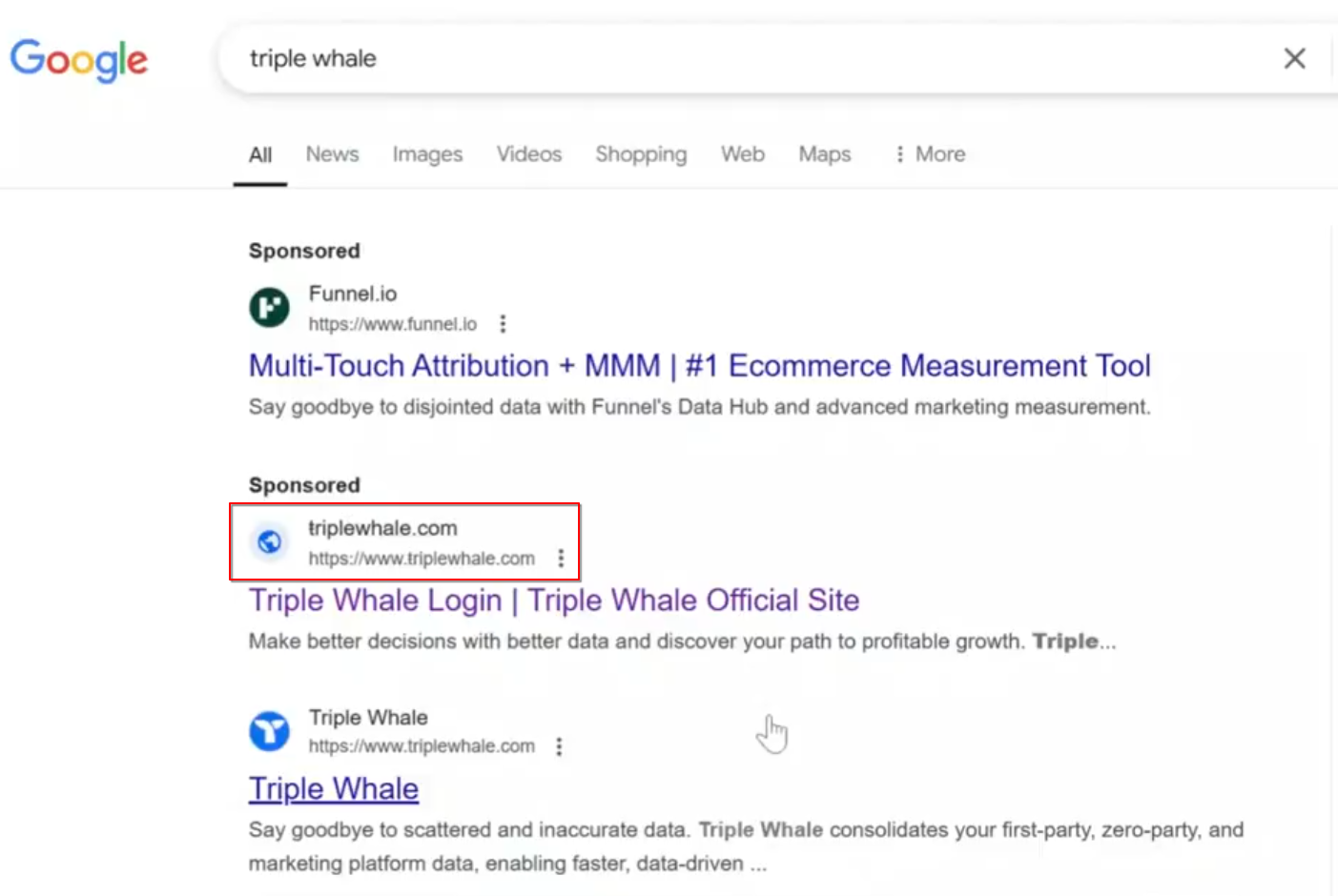
How Guardio Works to Protect You
-
Comprehensive Coverage: Guardio blocks malicious sites regardless of where you click the link—whether from an email, a social media post, a search engine result, or elsewhere.
-
Real-Time Protection: Guardio’s context-aware security mechanisms detect and block threats immediately, preventing harmful sites from compromising your data. For example, when encountering a fake website in Google search results, Guardio identifies and blocks it before you can access it.
How did Guardio block this site? Our real-time protection and context-aware security mechanisms detected and blocked the scam immediately, preventing users from falling victim to an attack designed to steal personal and financial information. pic.twitter.com/hHlDldB1Fi
— Guardio (@GuardioSecurity) January 1, 2025-
Scam Ad Detection: Scammers often run ads on platforms like Facebook, leading to phishing sites. For instance, fake ads for a product called “Sora” trick users into downloading malware. Guardio intercepts these threats before they can harm your device.
🚨@OpenAI officially released its text to video generator Sora this week, and scammers are quick to act.
— Guardio (@GuardioSecurity) December 12, 2024
They’re running fake ads leading to sites mimicking Sora.
Guess what happens if you click "download" on one of these sites? Malware is downloaded straight to your device. pic.twitter.com/BzGoWfXivh -
Suspicious Link Alerts: If a link you click is malicious or even suspicious, Guardio instantly warns you, giving you the chance to avoid potential threats.
Conclusion
Protecting yourself from harmful websites is essential for a safer and more focused online experience. With Guardio, you can effortlessly take control of your digital security and have peace of mind while browsing. Ready to enhance your online security? Install Guardio today and experience top-notch protection tailored to keep you secure.
Related articles:
- Remove Malware Chrome
- What Are Browser Hijackers and How Are They Risking Your Privacy and Safety
- Browser Safety: Why It Is Important
- Thoses Pesky Popups: What You Need to Know About Push Notifications
- How to Browse and Use Incognito Mode
Boogie down the secure path
Be the first to know!
Subscribe to our exclusive mailing list and get the freshest stories from the Guardio team









